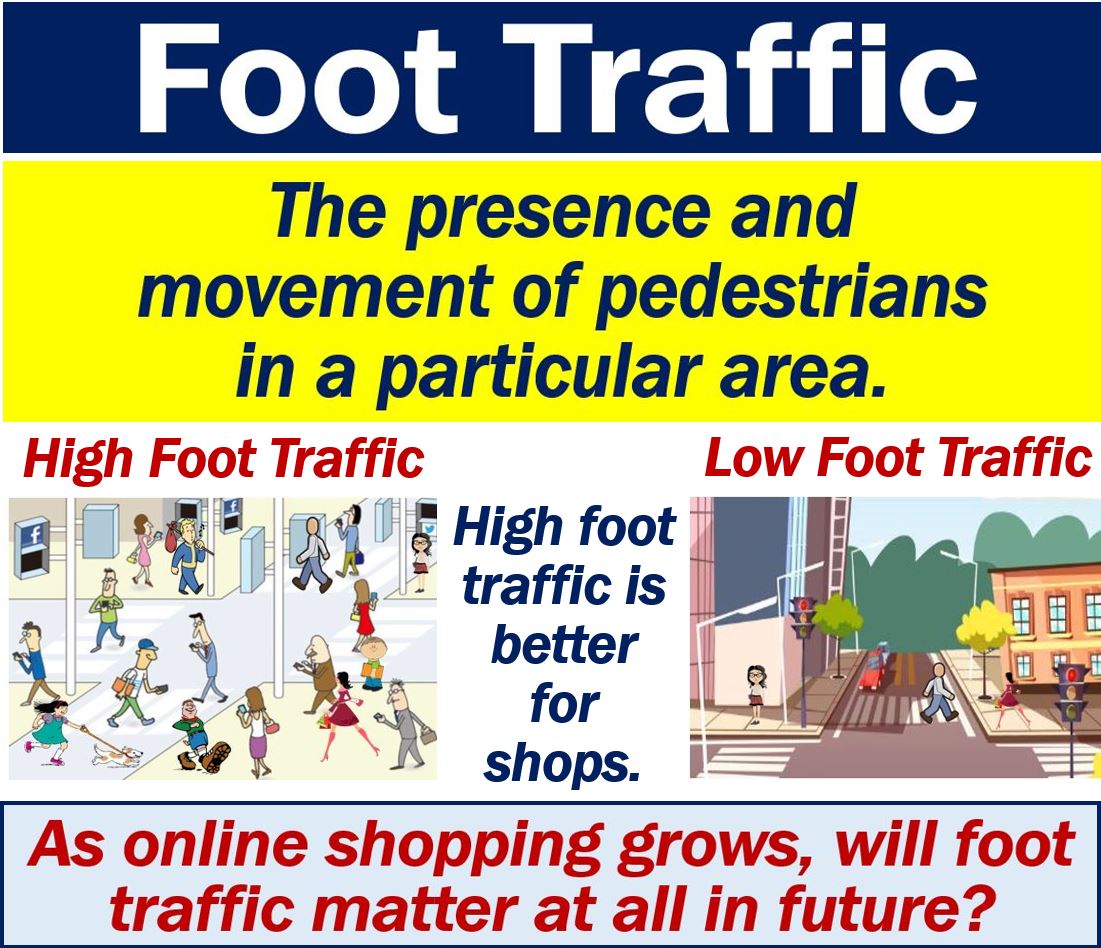Foot traffic refers to pedestrian activity, i.e., the number of people walking by. We use the term when talking about how many pedestrian visitors a business such as a shop gets. It also means how many pedestrians there are in the area where the shop is, including those who don’t walk in. The term may include people who came to a commercial establishment by car.
It is a very important metric for retailers. It is important because the presence of people walking around a specific space usually influences sales volumes. In other words, the more pedestrians there are, the more a shop will probably sell.
Put simply, the term is used to describe the number of people who pass by or visit a business. It includes anyone who walks past, walks in, or even drives by a store or commercial building.
The more foot traffic a business gets, the more chances it has to attract customers and make sales.
Foot traffic – Landlords
For landlords, i.e., those who rent property to retailers, pedestrian numbers matter. They matter because the number of pedestrians there are in an area often determines how much they can charge in rent.

Foot traffic matters
Let’s suppose you want to open a shop. One of the first things you have to do is determine where to set up the store.
You will gather data on the number of pedestrians who walk around the retail units that are available.
If you cannot get this data, you may have to sit down for a few hours and count the pedestrians yourself.
Large retail chains will usually get a consultant to obtain this data.
Finding out how many people walk by, i.e., foot traffic numbers is a very important metric. In fact, it could determine whether your business succeeds or fails.
If you were looking for premises for a law practice, on the other hand, foot traffic would matter less. That is why law practices are rarely on street level.
Lawyers do not typically get most of their clients off the street. Shoe shops, on the other hand, do.
Foot traffic – rents
Retail units in areas with the most foot traffic also charge the highest rents. They are expensive because, as explained earlier, foot traffic for shops means sales.
However, be careful about paying a very high rent. It could be so high that you might not be able to make a profit.
Having very high fixed costs might not be the best thing for a new business. Fixed costs are costs that never change, i.e., they are the same each month. Fixed costs contrast with variable costs.
Insurance premiums and rent are examples of fixed costs. Labor and materials, on the other hand, are variable costs.
Areas with lots of pedestrians may have another disadvantage. There will probably be fierce competition.
Let’s suppose your new shop sells shoes. If you open a shoe shop in a high foot traffic area, there will be many other shoe shops nearby.
